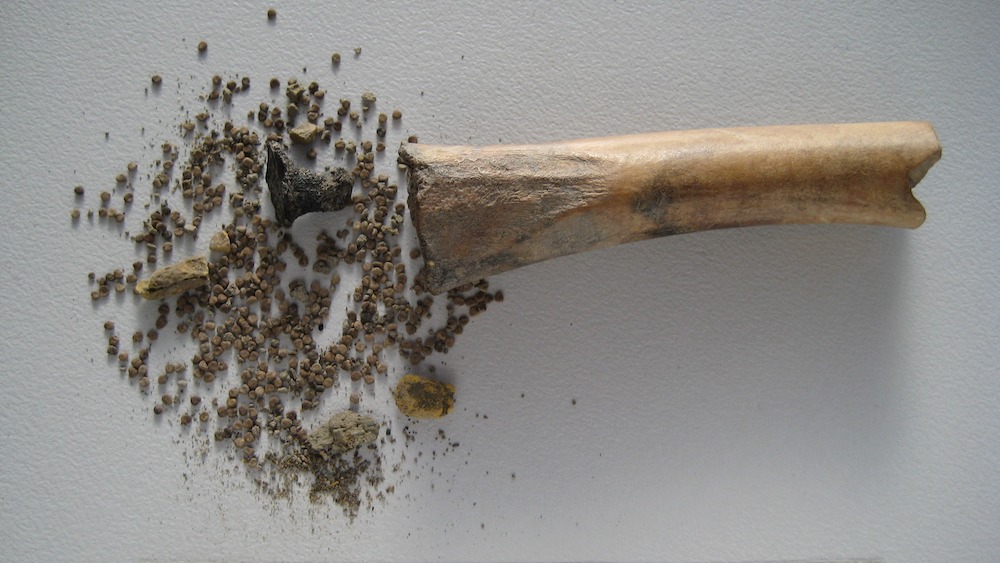Romans kept poisonous, narcotic seeds concealed in bone vials, new discovery reveals
A hollowed-out animal bone was used by Romans to store a stash of poisonous seeds and is the first-ever evidence of the seeds' use during the Roman era.

Nearly 2,000 years ago, someone used a hollowed-out piece of bone as a container for storing hundreds of poisonous seeds.
Archaeologists found the carved-out animal femur, or thigh bone, which likely came from a goat or sheep, at Houten-Castellum, a rural Roman-period settlement in what is now the Netherlands. Prior to this discovery in 2017, there had been no physical evidence of this plant being used by people in the Roman Empire, according to a statement.
The tiny seeds come from the black henbane (Hyoscyamus niger), a highly poisonous plant from the nightshade family. Henbane has long been prized for its medicinal properties and hallucinogenic effects, according to a new study, published in the April issue of the journal Antiquity.
Researchers have found similar seeds scattered at archaeologist sites across Europe dating back to 5500 B.C. However, it's often challenging to determine whether the presence of black henbane at these sites indicates it was used or appeared naturally, as the plant grows like a weed.
"Since the plant can grow naturally in and around settlements, its seeds can end up in archaeological sites naturally, without intervention by humans," study lead author Maaike Groot, a zooarchaeologist at the Free University of Berlin, said in the statement.
Related: Earliest traces of opium use, found in Israel, may have been an 'offering to the gods'
Archaeologists determined that the seeds were deliberately placed inside the bone, which measured 2.8 inches (7.2 centimeters) long. To ensure their safekeeping, someone had sealed the vessel using a plug made out of black birch bark. Researchers dated the bone to sometime between A.D. 70 and 100, based on the styles of ceramics and a wire brooch found in the same muddy pit.
Sign up for the Live Science daily newsletter now
Get the world’s most fascinating discoveries delivered straight to your inbox.
This is the first known instance of the seeds being deliberately stored for later use.
"The find is unique and provides unmistakable proof for the intentional use of black henbane seeds in the Roman Netherlands," Groot said.
The seeds support earlier Classical literature claiming that black henbane was used during the Roman period — although these sources suggest it was used medicinally and wasn't considered a recreational drug, according to the study. For instance, Roman author and naturalist Pliny the Elder (who lived from A.D. 23 to 79) wrote that the seeds could cause "insanity and giddiness," according to the study.
"Our study contributes to the discussion of how to distinguish between a weed naturally ending up in archaeobotanical assemblages and a plant intentionally used by people," Groot said. "We argue that future finds of black henbane should be studied by taking into account the context of the find and its relation to other medicinal plants."
Jennifer Nalewicki is former Live Science staff writer and Salt Lake City-based journalist whose work has been featured in The New York Times, Smithsonian Magazine, Scientific American, Popular Mechanics and more. She covers several science topics from planet Earth to paleontology and archaeology to health and culture. Prior to freelancing, Jennifer held an Editor role at Time Inc. Jennifer has a bachelor's degree in Journalism from The University of Texas at Austin.










